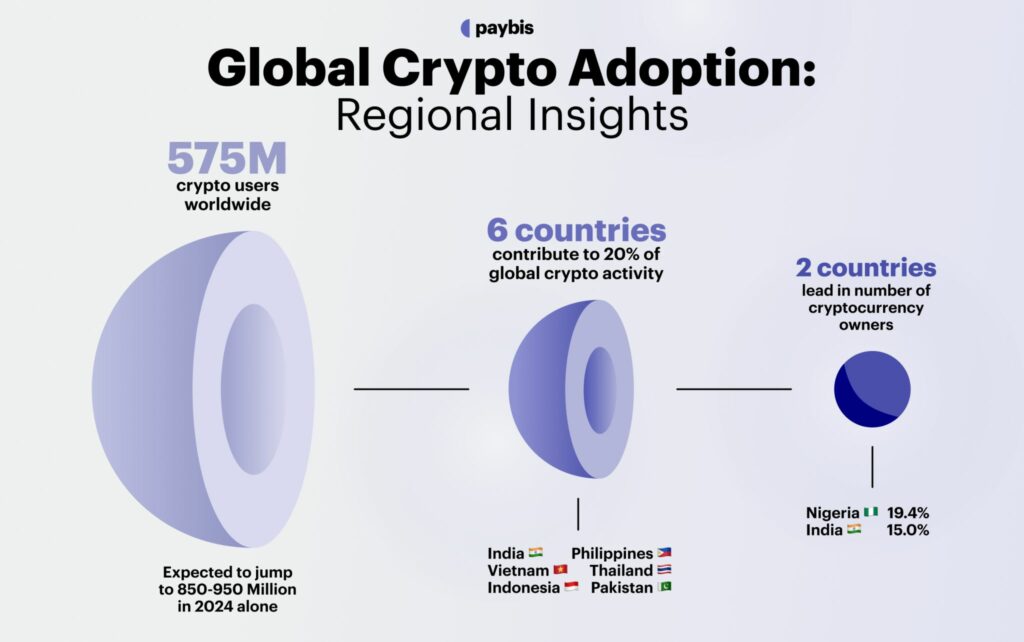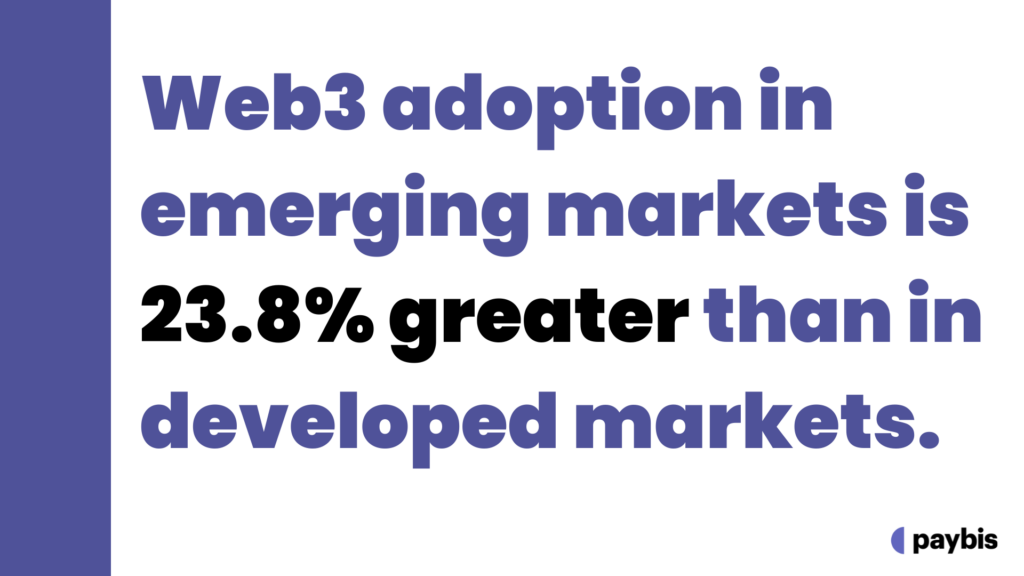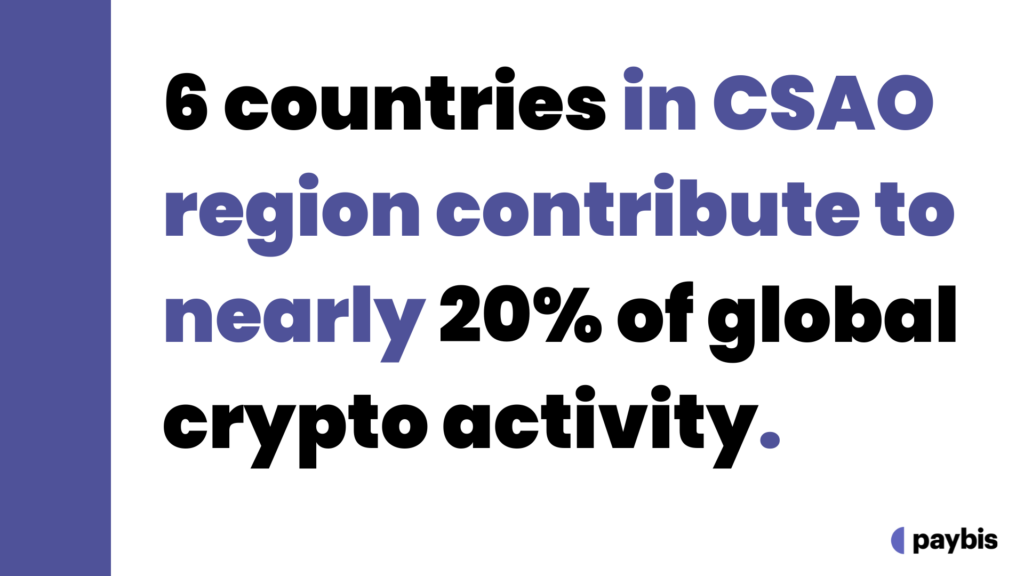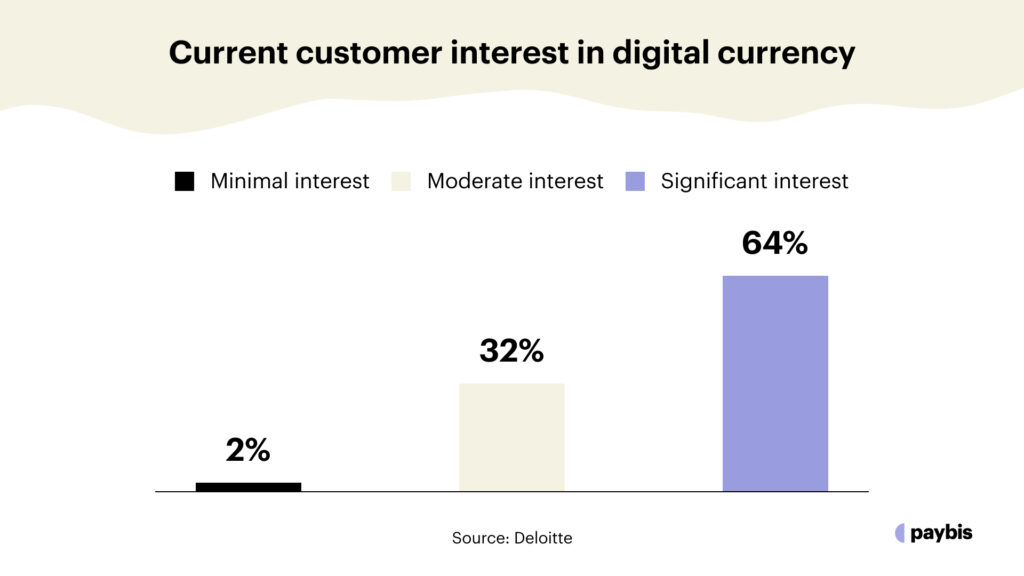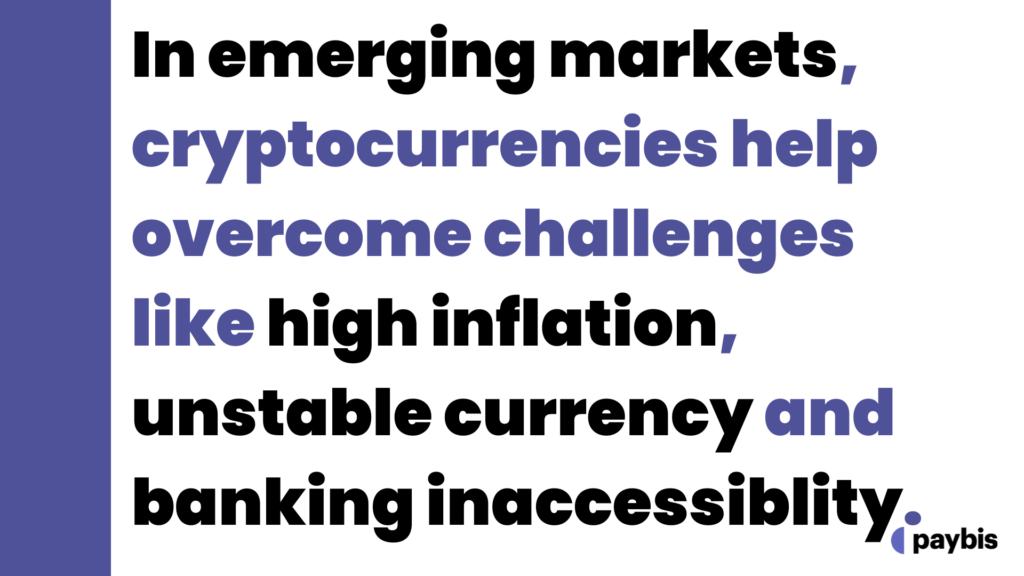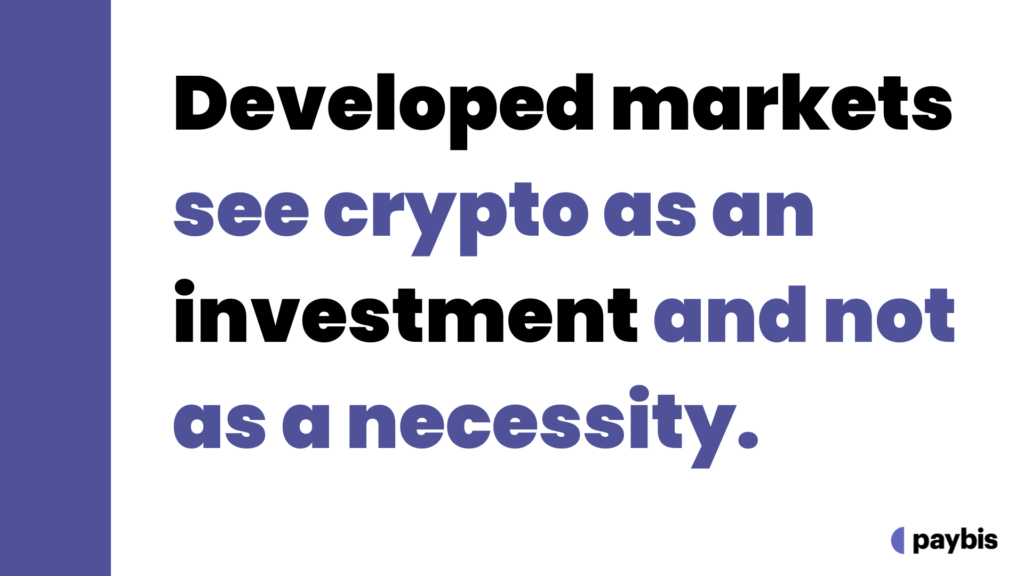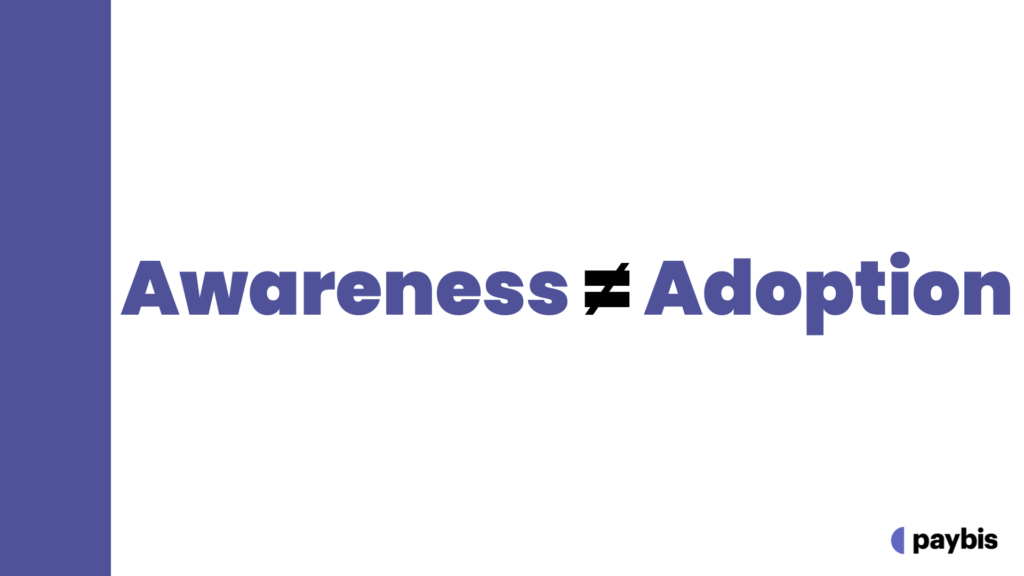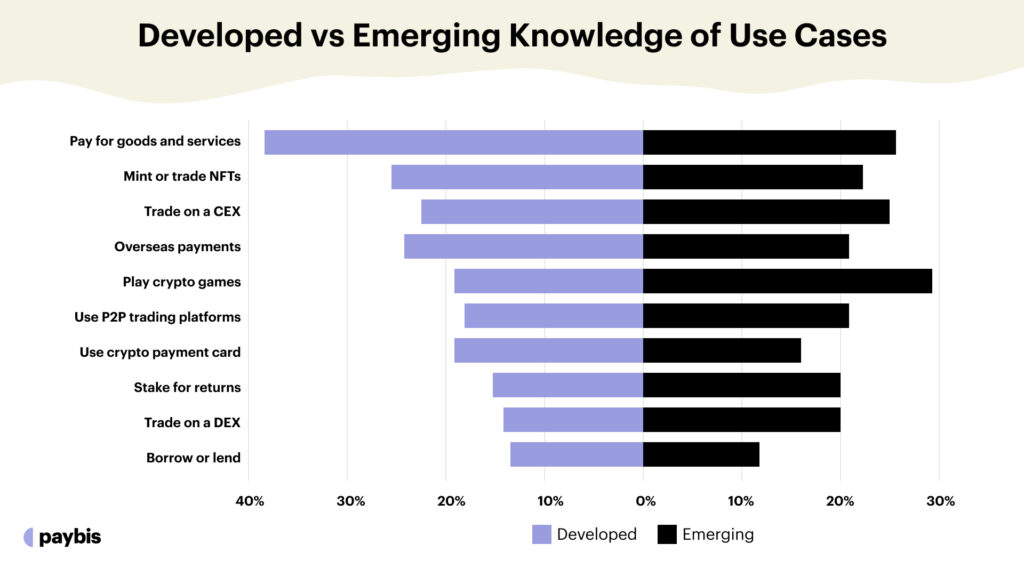Global Crypto Adoption Analysis: Key Trends and Regional Insights
The crypto industry, inherently global yet surprisingly local, demands a keen understanding of how different regions interact with this technology. Understanding the intricacies of regional adoption rates is not just a strategic asset; it’s a necessity for businesses looking to thrive in this space.
Adoption rates provide a lens through which businesses can understand customer familiarity and comfort with cryptocurrencies.
In regions with high adoption, users might demand cutting-edge features and sophisticated platforms. Conversely, in emerging markets, the focus might be on education and ease of use. By aligning their offerings with these user preferences, businesses can build deeper connections with their customers, fostering loyalty and trust.
This article will explore crypto adoption rates in various countries to spot hotbeds of innovation so that businesses can venture into newer markets confidently.
Table of contents
Current State of Global Crypto Adoption
The global landscape of cryptocurrency adoption presents a fascinating dichotomy.
A recent survey by Coinbase reveals that 30.8% of participants have engaged with at least one web3 service, like Paybis. This usage is significantly higher in emerging markets at 45.8%, compared to just 22% in developed markets.
This disparity in adoption rates across regions can be attributed to various factors. In emerging markets, cryptocurrencies often serve as a hedge against inflation and a means for efficient cross-border transactions. In contrast, developed markets exhibit a more cautious approach, potentially due to well-established financial systems and regulatory environments.
Diving deeper, the Chainalysis 2023 Global Crypto Adoption Index provides a comprehensive perspective, highlighting that the Central and Southern Asia and Oceania (CSAO) region leads in crypto adoption, with six of the top ten countries – including India, Vietnam, the Philippines, Indonesia, Pakistan, and Thailand – located in this region. These countries contribute to nearly 20% of global crypto activity, with a significant portion of transactions involving DeFi protocols.
Emerging markets, especially lower middle-income (LMI) countries, show a stronger recovery in grassroots crypto adoption compared to other regions. This recovery is driven more by necessity rather than speculation, with peer-to-peer platforms being popular in countries with stricter capital controls, such as Pakistan and Vietnam. Notably, LMI countries represent 40% of the global population, and their growing adoption indicates a significant trend in the global crypto landscape.
On a global scale, Vietnam and Pakistan demonstrate notable cryptocurrency ownership rates of 6% and 4.1%, respectively. The business sector is increasingly adopting cryptocurrencies as a form of payment, with major brands and corporations accepting them. A 2022 survey by Deloitte highlighted that 75% of retailers plan to accept cryptocurrencies in the next two years. The user base growth of major cryptocurrency exchanges such as Coinbase and Binance further underscores the expanding reach of cryptocurrencies.
This trend, along with the growing institutional adoption in high-income countries, paints a promising future for the role of cryptocurrencies in the global economy.
Comparative Analysis of Past Web3 Usage by Country
The data from Coinbase’s survey on international web3 adoption underscores a clear pattern: emerging markets consistently rank in the top half of the adoption chart, while developed markets are often found at the bottom. This divergence is not merely a reflection of technological trends but is deeply rooted in the socio-economic realities of these regions.
In emerging markets, the use of borderless currencies like cryptocurrencies is not just a matter of convenience but often a necessity. These regions face unique challenges such as high inflation rates, unstable local currencies, and limited access to traditional banking services.
Cryptocurrencies offer a viable alternative, serving as a tool for remittances, savings, and even as a hedge against economic instability. This practical application drives the higher adoption rates observed in these areas.
Developed markets show a different pattern of web3 usage. With stable financial systems and a wide array of financial services available, the urgency and immediate need for cryptocurrencies are less pronounced in these regions. The adoption here is often driven by investment opportunities and technological interest rather than economic necessity. Hence, developed markets, despite being technologically advanced, display a relatively lower adoption rate for cryptocurrencies and Web3 services.
This contrasting trend is further evidenced by the growing popularity of decentralized finance (DeFi) and peer-to-peer (P2P) platforms in emerging markets.
Discrepancy Between Awareness and Adoption
There is an intriguing case of discrepancy between awareness and adoption. Despite high awareness levels, this does not always equate to high adoption rates.
For instance, while the concept of using crypto as a payment method is well-known, only about 6% of Coinbase’s survey respondents have actually employed this feature in practice. This highlights a significant adoption gap, even among those who are aware of web3 services.
The discrepancy is further illustrated by the usage of specific web3 services.
Trading on centralized exchanges and playing crypto games, despite being ranked 3rd and 5th in terms of awareness, are the most adopted services. On the other hand, staking for returns, which is less known compared to other services, surprisingly ranks as the third most adopted activity.
The most recognized service, paying for goods and services with cryptocurrencies, has only been used by around six percent of respondents, ranking it fourth along with using peer-to-peer (P2P) trading platforms. This is in stark contrast to the general awareness of this service, indicating a significant gap between what people know and how they act.
The factors contributing to this discrepancy are complex. High volatility and a lack of understanding are the primary obstacles hindering wider adoption, followed by a lack of funds.
For crypto users, concerns such as volatility, platform bankruptcy, and government regulation are prominent. These concerns indicate that while awareness might be high, the practical aspects and perceived risks of using these services play a significant role in determining actual adoption rates.
Future Prospects of Crypto Adoption
The future of crypto adoption is shaped by current trends and anticipated changes in the global financial landscape. Below is our analysis based.
Anticipated Growth in Payment Usage
Despite being the most well-known use case, paying with crypto is not currently the most used due to factors like lack of infrastructure, high exchange rate volatility, and privacy concerns. However, there is an expectation that these issues will be addressed within the next three years, leading to wider adoption of crypto as a means of payment.
The anticipated growth is from the current level of 6% to 16%, potentially making it the most popular service, surpassing trading on centralized exchanges and staking or playing crypto games.
Emerging Markets Driving Adoption
In emerging markets, the interest in using crypto as a means of payment is particularly high. This interest stems from dissatisfaction with current domestic currencies and the appeal of stablecoins as a hedge against inflation.
For example, in the Philippines, paying for goods and services, staking for returns, and playing crypto games are projected to be the top three future use cases, with at least 25% of the population intending to use these services.
Regulatory Clarity and Technological Advancements
A significant increase in the usage of Web3 services is anticipated over the next three years, driven by regulatory clarity and technological advancements making these services more secure and user-friendly.
Participants of the Coinbase survey anticipate a 50% increase in their usage of web3-related products and services, suggesting a growing comfort and trust in these technologies.
Challenges and Opportunities
The main hurdles towards wider adoption of web3 services include high volatility, lack of understanding, and limited funds. For current web3 users, volatility, platform bankruptcy, and government regulation are the top concerns. Addressing these concerns is crucial for boosting adoption rates.
Additionally, emerging economies, while displaying less awareness of Web3 services compared to developed countries, are more likely to use and adopt them in the future, particularly for NFTs and gaming.
Conclusion
As we stand at the crossroads of the crypto revolution, it’s evident that the journey of cryptocurrency and web3 services is not just a tale of technological advancement, but a reflection of the diverse socio-economic tapestries across the globe.
The stark disparity in adoption rates between emerging and developed markets is a testament to the dual nature of cryptocurrency: a financial lifeline in some regions, and a sophisticated investment vehicle in others.
In emerging markets, where crypto acts as a buffer against economic instability, the future is likely to see an even greater integration of cryptocurrencies into everyday transactions, driven by necessity and innovation in equal measure.
Developed markets, on the other hand, may witness a more cautious but steady expansion of crypto as an asset class, with regulatory clarity and technological advancements smoothing the path.
The critical gap between awareness and adoption unveils an opportunity for stakeholders in the crypto space to foster a deeper understanding and trust in these technologies. The anticipated increase in web3 usage points to a future where crypto becomes more mainstream, but this future is contingent on addressing key concerns like volatility, platform security, and regulatory challenges.
Paybis is at the forefront of bolstering trust and usability to make crypto mainstream to the global population. To bridge your game of awareness and adoption, read more articles from the Paybis blog.
Disclaimer: Don’t invest unless you’re prepared to lose all the money you invest. This is a high‑risk investment and you should not expect to be protected if something goes wrong. Take 2 mins to learn more at: https://go.payb.is/FCA-Info

